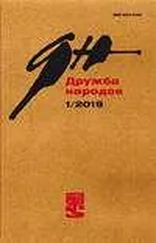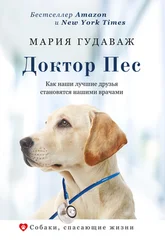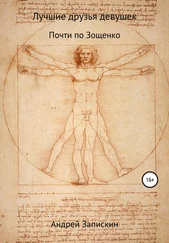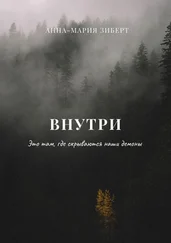Благодаря собакам и ученым, поверившим в них, болезней в мире стало меньше.
Все интервью для этой книги были взяты в период с января 2017 по январь 2019 года, в основном лично, но также по телефону, FaceTime, Skype, электронной почте, sms, Facebook, WhatsApp, Line и даже (честное слово!) по улиточной почте.
Далее я привожу список источников, использовавшихся при работе над каждой главой. Как вы можете заметить, здесь нет книг о собаках, поскольку я предпочитала основываться преимущественно на первичных источниках, а также потому, что другие книги о собаках не касались большинства тем, которые затронуты у меня. Однако мои знания о псах за годы работы сильно обогатились благодаря чтению книг, и я хочу ниже перечислить несколько самых выдающихся из них.
О собачьем обонянии читайте Being a Dog (Alexandra Horowitz), а если хотите стать экспертом в данном вопросе, я рекомендую более научную, но все равно захватывающую книгу Canine Olfaction Science and Law (Tadeusz Jezierski, John Ensminger and L. E. Papet). Любимые книги, из которых я узнала, как собаки думают и как они воспринимают мир: Genius of Dogs (Brian Hare, Vanessa Woods), How Dogs Love Us (Gregory Berns), How Dogs Think (Stanley Coren), Dog Sense (John Bradshaw), Dog Behaviour, Evolution and Cognition (Adam Miklosi), Inside of a Dog (Alexandra Horowitz), The Other End of the Leash (Patricia McConnell).
Вы можете также заметить, что в списках людей, у которых я брала интервью для каждой главы, не упомянуты собаки. Дело в том, что мой издатель не включает их в категорию «люди». Гас приносит за это извинения всем собакам, упомянутым в книге, от Аякса до Дзена.
Введение
Agence France-Presse in Paris. «Bomb Detector Works Better with Fake Dog Nose on the End». The Guardian , 1 December 2016. www.theguardian.com/science/2016/dec/02/bomb-sniffer-works-better-with-fake-dog-nose-on-the-end.
Alberge, Dalya. «Dogs Trained to Sniff Out Ancient Treasures Looted from Syria». The Guardian , 11 March 2018. www.theguardian.com/artanddesign/2018/mar/11/dogs-trained-to-sniff-out-ancient-treasures-looted-from-syria.
Amann, Anton, et al. «The Human Volatilome: Volatile Organic Compounds (VOCs) in Exhaled Breath, Skin Emanations, Urine, Feces and Saliva». Journal of Breath Research 8, no. 3 (September 2014): 034001, doi:10.1088/1752–7155/8/3/034001.
American College of Obstetricians and Gynecologists (ACOG). «ACOG Statement on FDA Safety Communication on Ovarian Cancer Screening Tests». News release, 8 September 2016. www.acog.org/About-ACOG/News-Room/Statements/2016/ACOG-Statement-on-FDA-Safety-Communication-on-Ovarian-Cancer-Screening-Tests.
Angle, Craig, et al. «Canine Detection of the Volatilome: A Review of Implications for Pathogen and Disease Detection». Frontiers in Veterinary Science 3 (24 June 2016), doi:10.3389/fvets.2016.00047.
«Canines for Conservation». Steve Austin: Canine Training and Behaviour. Accessed 2 February 2018. www.steveaustindogtrainer.com/services/canines-for-conservation/.
«Conservation Canines». Center for Conservation Biology, University of Washington. Accessed 1 August 2018. conservationbiology.uw.edu/conservation-canines/.
Costello, B. de Lacy, et al. «A Review of the Volatiles from the Healthy Human Body». Journal of Breath Research 8, no. 1 (March 2014): 014001, doi:10.1088/1752–7155/8/1/014001.
Craven, Brent A., et al. «The Fluid Dynamics of Canine Olfaction: Unique Nasal Airflow Patterns as an Explanation of Macrosmia». Journal of the Royal Society Interface 7, no. 47 (9 December 2009): 933–943, doi:10.1098/rsif.2009.0490.
«Cremains Recovery after California Wildfire». Institute for Canine Forensics. Accessed 1 November 2018. https://www.icfk9.org/cremains-recovery.
Cuthbert, Lori. «How Sniffer Dogs Find Cremated Human Remains after Wildfires». National Geographic , 30 October 2018. www.nationalgeographic.com/animals/2018/10/sniffer-dogs-human-remains-california-wildfires-cremation-news/.
Daley, Jason. «Sniffer Dogs Represent the Latest Weapon in the Fight Against the Illegal Ivory Trade». Smithsonian , 28 August 2018. www.smithsonianmag.com/smart-news/sniffer-dogs-and-new-technology-team-save-elephants-180970143/.
Donahue, Michelle Z. «Meet the Dogs Sniffing Out Whale Poop for Science». Smithsonian , 8 February 2016. www.smithsonianmag.com/science-nature/meet-dogs-sniffing-out-whale-poop-science- 180958050/.
Fiegl, Amanda. «Meet Migaloo, World’s First «Archaeology Dog». « National Geographic , 11 December 2012. news.nationalgeographic.com/news/2012/12/121210-archaeology-dogs-australia-conservation-canines/.
Geggel, Laura. «Elephants Can Outsniff Rats and Dogs». Live Science , 22 July 2014. www.livescience.com/46940-elephant-genes-sense-of-smell.html.
Gray, Richard. «The Many Reasons Why Dogs Might Roll in Smelly Poo». Earth , BBC News, 8 June 2017. www.bbc.com/earth/story/20170608-the-many-reasons-why-dogs-might-roll-in-smelly-poo.
«Hero Rats». YouTube video, 1:19, published by iloveratrats, 4 July 2011. https://youtube /WS1gh3QtB44.
Interviews with Matthew Staymates, PhD, fluid dynamicist and mechanical engineer, National Institute of Standards and Technology; Craig Angle, PhD, codirector, Canine Performance Sciences, College of Veterinary Medicine, Auburn University; Cindy Otto, DVM, PhD, founder and executive director, Penn Vet Working Dog Center, University of Pennsylvania; Naoto Anzue, Guide Dog & Service Dog & Hearing Dog Association of Japan; Marie-José Enders, PhD, Royal Dutch Guide Dog Foundation; Dina Zaphiris, In Situ Foundation; Leone, Renato, and Zeljka Brašnić; Takayuki Uozumi, PhD, and Kazuko Matsubara, PhD, Hirotsu Bio Science; Robyn Stark, program manager, Steve Austin Conservation Canines; and Clive Wynne, PhD, Canine Science Collaboratory, Arizona State University.
Japan Assistance Dog Welfare Association. Accessed October 2017. http://www.kaijoken.or.jp/about/index.html.
Jenkins, Eileen K., et al. «When the Nose Doesn’t Know: Canine Olfactory Function Associated with Health, Management, and Potential Links to Microbiota». Frontiers in Veterinary Science 5 (29 March 2018), doi:10.3389/fvets.2018.00056.
«Key Statistics for Ovarian Cancer». American Cancer Society. Accessed November 2018. www.cancer.org/cancer/ovarian-cancer/about/key-statistics.html.
Kimball, Bruce A., et al. «Avian Influenza Infection Alters Fecal Odor in Mallards». PLoS One 8, no. 10 (16 October 2013), doi:10.1371/journal.pone.0075411.
Levenson, Richard M., et al. «Pigeons ( Columba livia ) as Trainable Observers of Pathology and Radiology Breast Cancer Images». PLoS One 10, no. 11 (18 November 2015), doi:10.1371/journal.pone.0141357.
Читать дальше
Конец ознакомительного отрывка
Купить книгу
![Мария Гудаваж Доктор Пес [Как наши лучшие друзья становятся нашими врачами] [litres] обложка книги](/books/388896/mariya-gudavazh-doktor-pes-kak-nashi-luchshie-druzya-s-cover.webp)


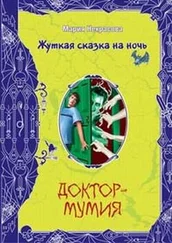
![Дэвид Эпштейн - Универсалы [Как талантливые дилетанты становятся победителями по жизни] [litres]](/books/387981/devid-epshtejn-universaly-kak-talantlivye-diletant-thumb.webp)
![Александр Силаев - Философия без дураков [Как логические ошибки становятся мировоззрением и как с этим бороться?] [litres]](/books/393881/aleksandr-silaev-filosofiya-bez-durakov-kak-logiche-thumb.webp)
![Кристин Террилл - Все наши вчера [litres]](/books/412716/kristin-terrill-vse-nashi-vchera-litres-thumb.webp)
